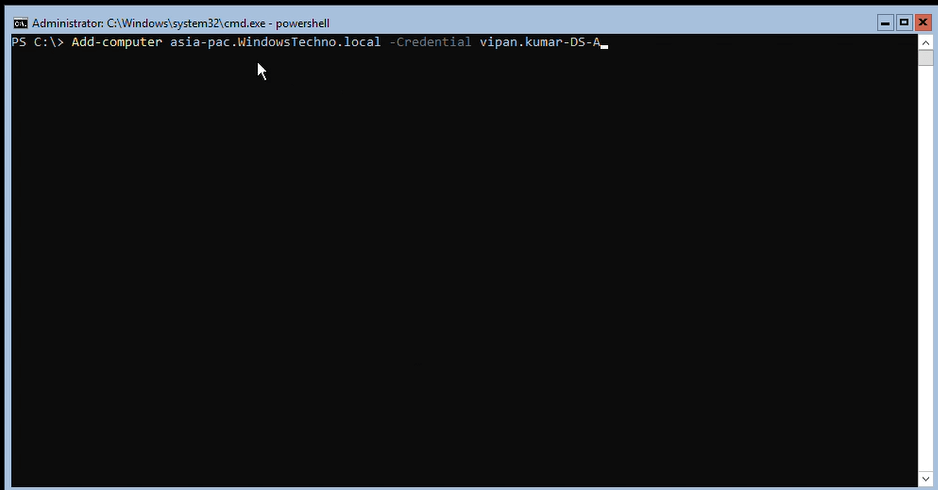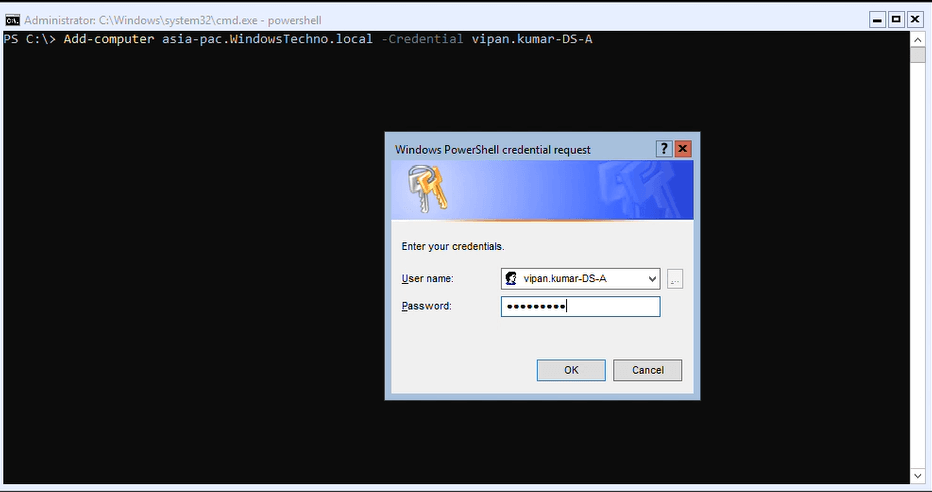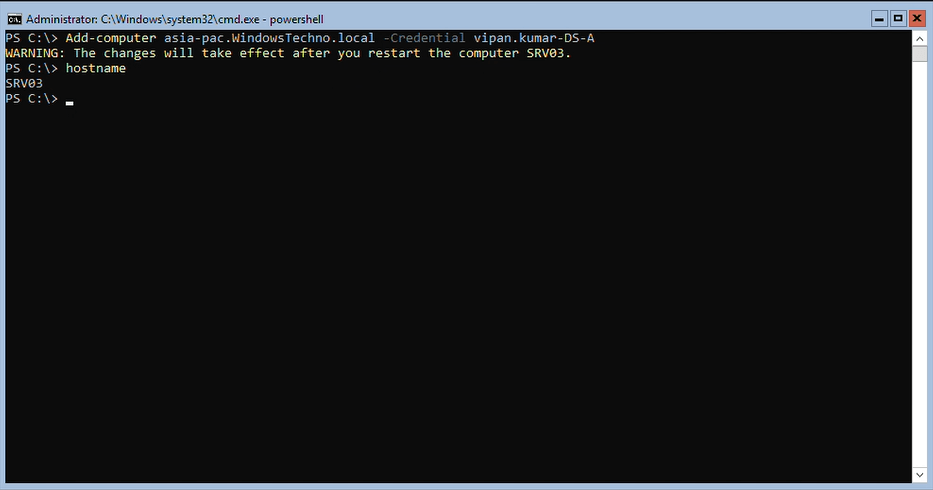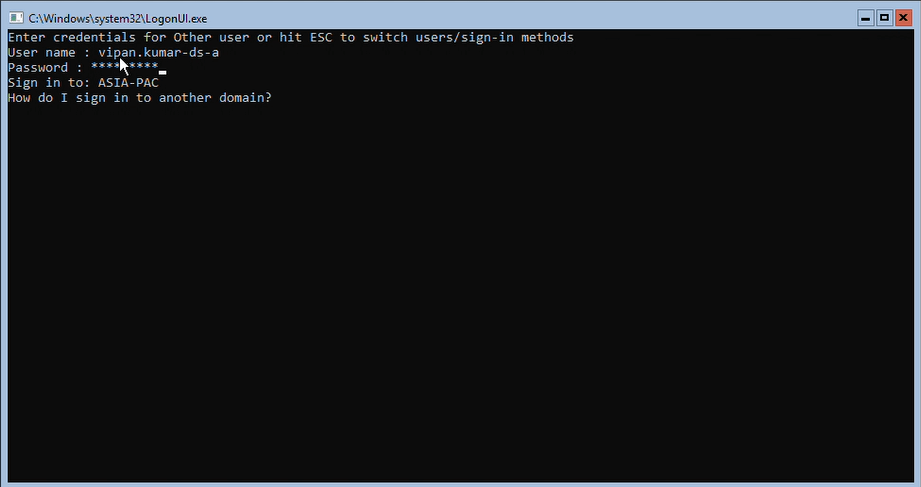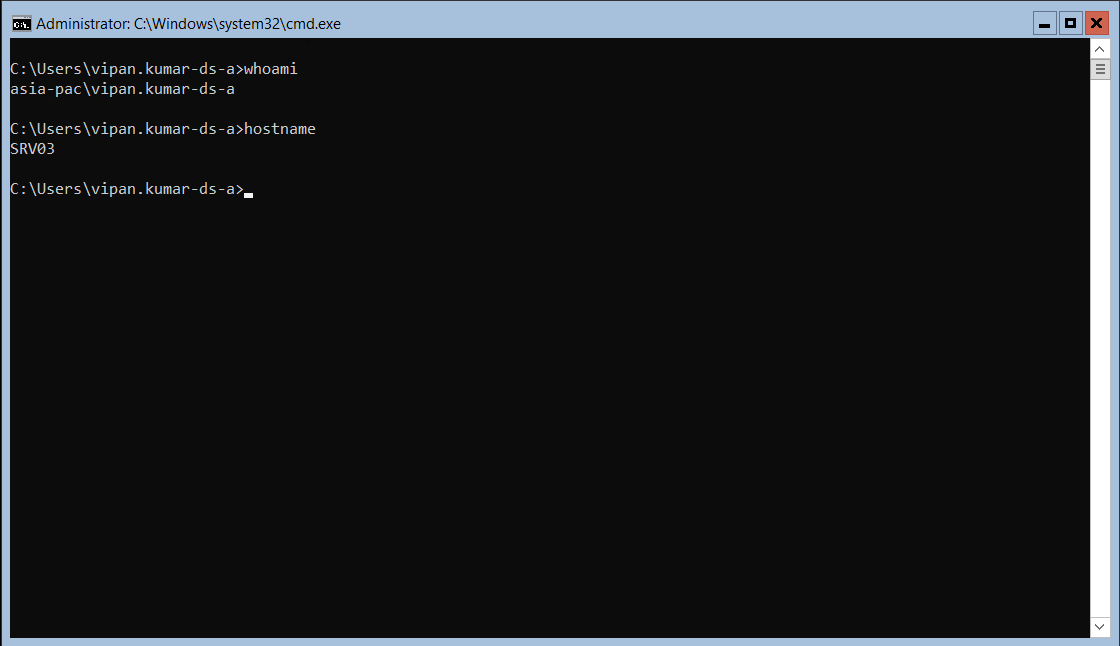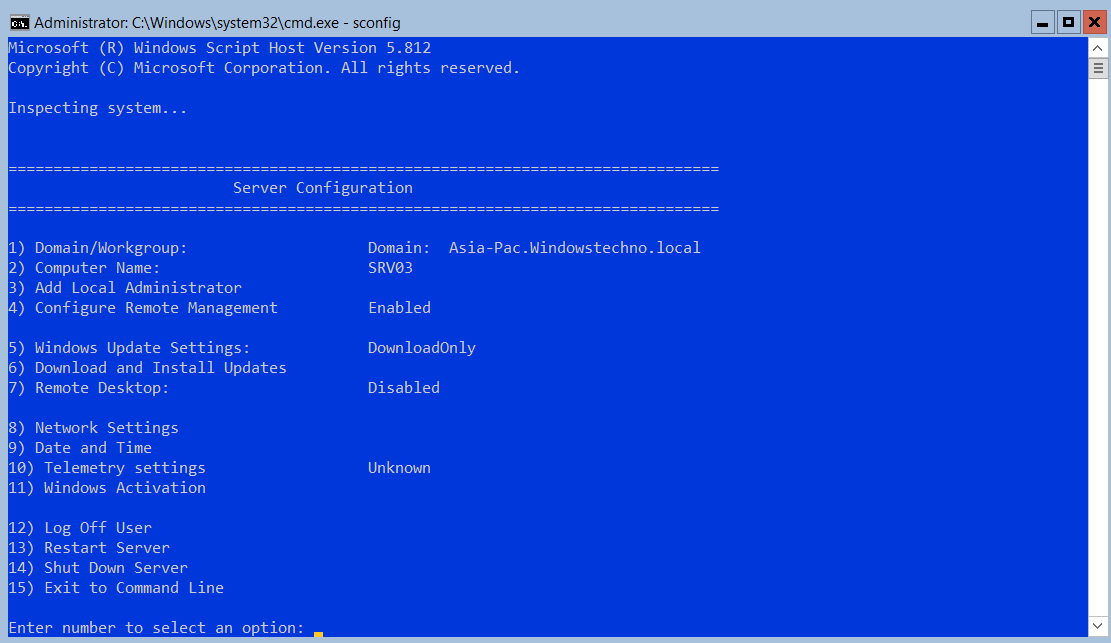How to join computer to domain through powershell
Domain joining refers to the process of connecting a computer or device to a specific domain in a Windows network environment. In a domain-based network, a domain controller manages user accounts, security policies, and network resources. By joining a domain, a computer becomes a member of that domain and gains access to shared resources and centralized authentication services provided by the domain controller.
A domain can be joined or left in two different ways. You can add and remove computers using the netdom or powershell commands.
The online way
Join a domain. If the machine you wish to connect has you logged in
C:\> netdom join ECXCHDFS01 /domain:Windowstechno.local /UserD:Make-ds-a /PasswordD:****
Join a workgroup and leave the domain. Even if you don’t have the authority to remove the computer object from the domain, the /force option disconnects the machine from the domain. There is still the domain computer object.
c:\> netdom remove %computername% /domain:your.OldADDomain.net /force
The Powershell way
Join computer to domain through powershell
- Login to sever via local admin and run the below commands.
PS C:\> Add-computer Asia-pac.WindowsTechno.local -Credential Vipan.Kumar-DS-A
- Hit Enter
- To join the system with the domain, enter the credentials for the domain admin account.
- To make domain join and policies effective, restart the server.
- To check whether domain joining was successful or not, log in using a domain account.
- We are able to login to server via domain account.
- Just run the sconfig command to get the below details.
Remove from Domain and join a workgroup.
PS C:\> Remove-computer -ECXCHDFS02 yourWorkgroup
Additionally, we have a video below that demonstrates the same. Do not forget to check this.
So, that’s all in this blog. I will meet you soon with next stuff. Have a nice day!!!
Recommended content
How to Check the Active Directory Database Integrity
Disabling and Enabling the Outbound Replication
DFS Replication Service Stopped Replication
What is Strict Replication Consistency
The replication operation failed because of a schema mismatch between the servers involved
Troubleshooting ad replication error 8418 the replication operation failed because of a schema mismatch between the servers
How to export replication information in txt file
Repadmin Replsummary
Enabling the outbound replication
Disabling and enabling replication on schema master domain controller
How to enable strict replication consistency
How to prevent lingering objects replication in active directory
AD replication process overview
How to force active directory replication
Change notification in replication process
How to check replication partner for a specific domain controller
dcdiag test replications
Guys please don’t forget to like and share the post.Also join our WindowsTechno Community and where you can post your queries/doubts and our experts will address them .
You can also share the feedback on below windows techno email id.
If you have any questions feel free to contact us on admin@windowstechno.com also follow us on facebook@windowstechno to get updates about new blog posts.

